Thai Prime Minister Somchai Wongsawat rejected pressure to resign yesterday as thousands of anti-government demonstrators marched in protest at last week’s deadly street clashes.
Police hung back as some 5,000 supporters of the People’s Alliance for Democracy (PAD) marched down a busy Bangkok street carrying pictures of Somchai emblazoned with the word “murderer.”
Two people were killed and nearly 500 injured on Oct. 7 when police fired tear gas to prevent thousands of PAD supporters from blocking parliament, prompting some protesters to fight back.
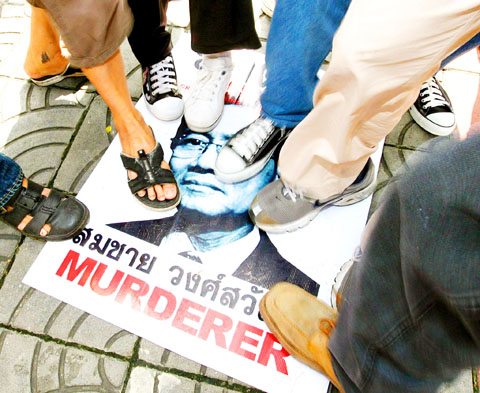
PHOTO: EPA
Thailand’s powerful army chief had hinted on Thursday that the prime minister should resign over the clashes, prompting rumors that Somchai may heed his advice and dissolve parliament.
But despite calling an urgent meeting of his coalition partners, Somchai said he would stay on for the sake of the country.
“The government cannot abandon its duty as we still have three key functions coming up,” he said, referring to two royal events and a regional summit to be held before the end of the year. “Whether I resign or do not resign will depend on national interest.”
At the downtown rally, PAD supporters handed out books and CDs with photos and accounts of last week’s violence.
“The truth will show why the government has no legitimacy to run the country,” Somsak Kosaisuk, a PAD leader, told the crowd, many wearing black to mourn the dead supporters or yellow out of allegiance to the king.
“The government thinks that people are their enemy and used the police to kill people on Oct. 7,” Somsak said.
The color booklets showed graphic images of protesters whose limbs were blown off in the clashes — injuries blamed by a forensic expert on dangerous Chinese-made tear gas canisters.
The front page of the PAD leaflet showed a man clutching the bloodied stump of his leg, allegedly after it was blown off by police.
“We have brought pieces of cloth, water bottles and masks in case the police use tear gas again,” 42-year-old PAD supporter Dusadee Siriwanlop said.
The PAD launched its campaign in May, claiming that the ruling People Power Party elected in December was a puppet of ousted and exiled prime minister Thaksin Shinawatra, whom it accuses of corruption and nepotism.
The crowd — which police estimated at 5,000 — seemed largely cheerful yesterday, sheltering from the sun under a sea of umbrellas.
The rally ended without incident at about 1pm after the protesters marched to the main shopping district and dispersed.
Yesterday’s protests came a day after army chief General Anupong Paojinda appeared on television flanked by the heads of the air force, navy and police saying that if he were Somchai, he would resign.
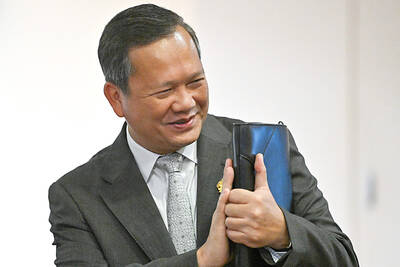
The military is to begin conscripting civilians next year, Cambodian Prime Minister Hun Manet said yesterday, citing rising tensions with Thailand as the reason for activating a long-dormant mandatory enlistment law. The Cambodian parliament in 2006 approved a law that would require all Cambodians aged 18 to 30 to serve in the military for 18 months, although it has never been enforced. Relations with Thailand have been tense since May, when a long-standing territorial dispute boiled over into cross-border clashes, killing one Cambodian soldier. “This episode of confrontation is a lesson for us and is an opportunity for us to review, assess and
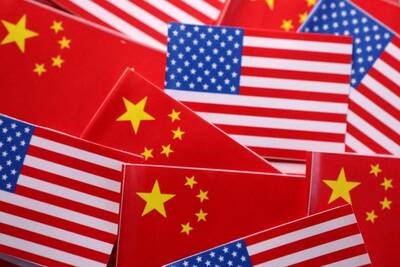
The United States Federal Communications Commission said on Wednesday it plans to adopt rules to bar companies from connecting undersea submarine communication cables to the US that include Chinese technology or equipment. “We have seen submarine cable infrastructure threatened in recent years by foreign adversaries, like China,” FCC Chair Brendan Carr said in a statement. “We are therefore taking action here to guard our submarine cables against foreign adversary ownership, and access as well as cyber and physical threats.” The United States has for years expressed concerns about China’s role in handling network traffic and the potential for espionage. The U.S. has
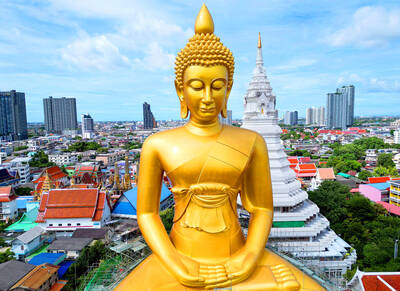
IDENTITY: A sex extortion scandal involving Thai monks has deeply shaken public trust in the clergy, with 11 monks implicated in financial misconduct Reverence for the saffron-robed Buddhist monkhood is deeply woven into Thai society, but a sex extortion scandal has besmirched the clergy and left the devout questioning their faith. Thai police this week arrested a woman accused of bedding at least 11 monks in breach of their vows of celibacy, before blackmailing them with thousands of secretly taken photos of their trysts. The monks are said to have paid nearly US$12 million, funneled out of their monasteries, funded by donations from laypeople hoping to increase their merit and prospects for reincarnation. The scandal provoked outrage over hypocrisy in the monkhood, concern that their status
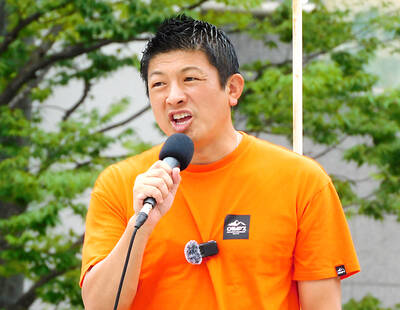
A disillusioned Japanese electorate feeling the economic pinch goes to the polls today, as a right-wing party promoting a “Japanese first” agenda gains popularity, with fears over foreigners becoming a major election issue. Birthed on YouTube during the COVID-19 pandemic, spreading conspiracy theories about vaccinations and a cabal of global elites, the Sanseito Party has widened its appeal ahead of today’s upper house vote — railing against immigration and dragging rhetoric that was once confined to Japan’s political fringes into the mainstream. Polls show the party might only secure 10 to 15 of the 125 seats up for grabs, but it is